Captured German Combat Map of 'Metz 36AB' France Sector




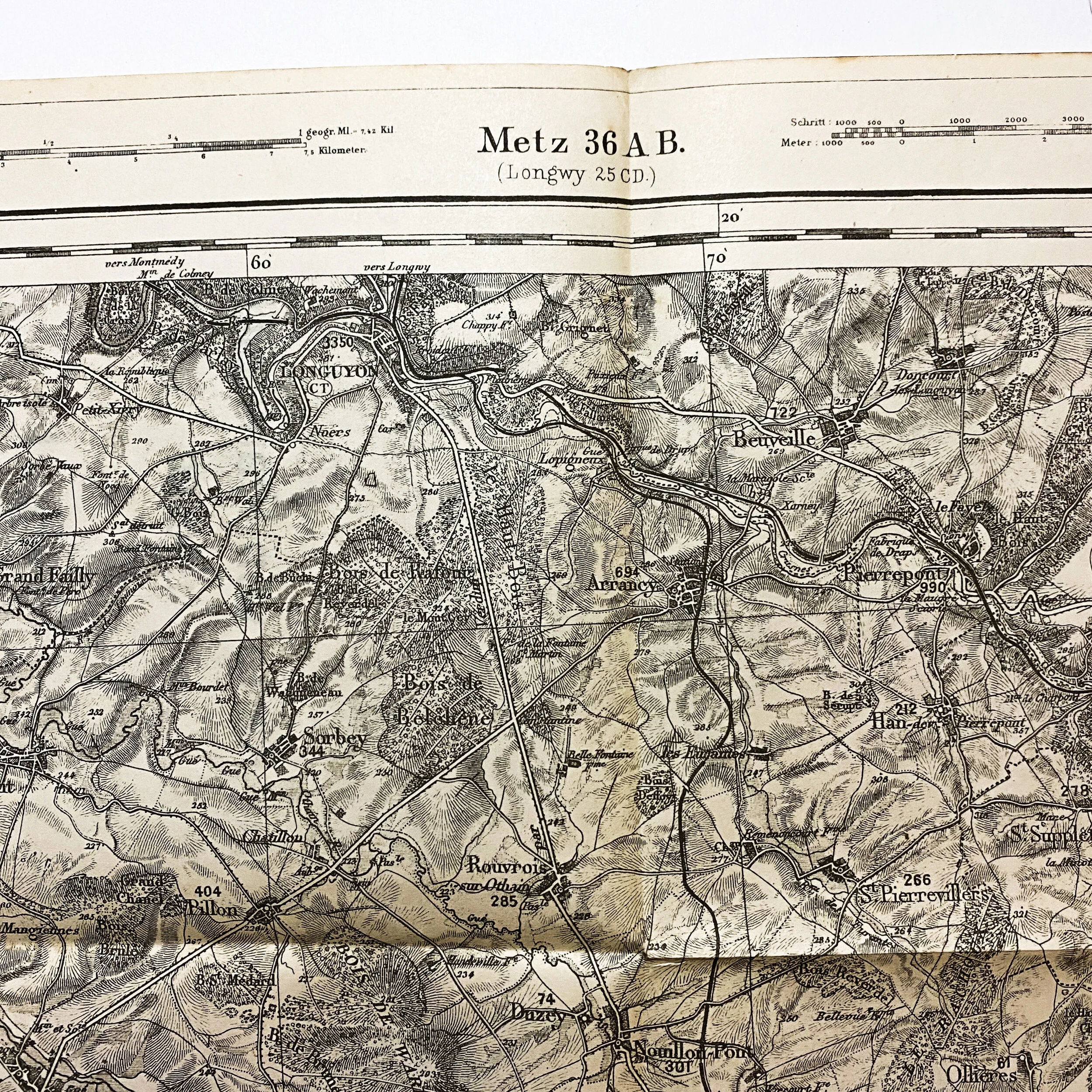

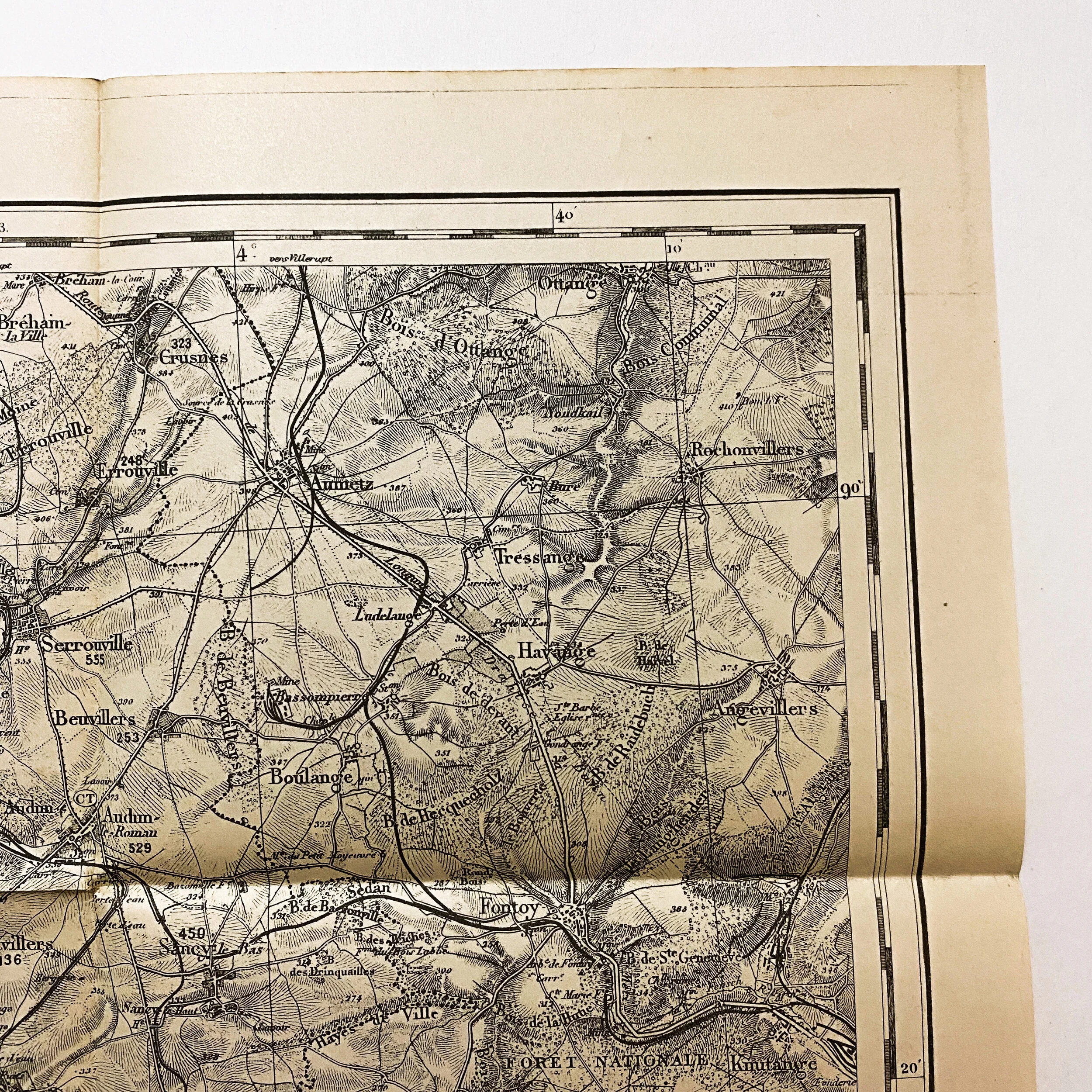
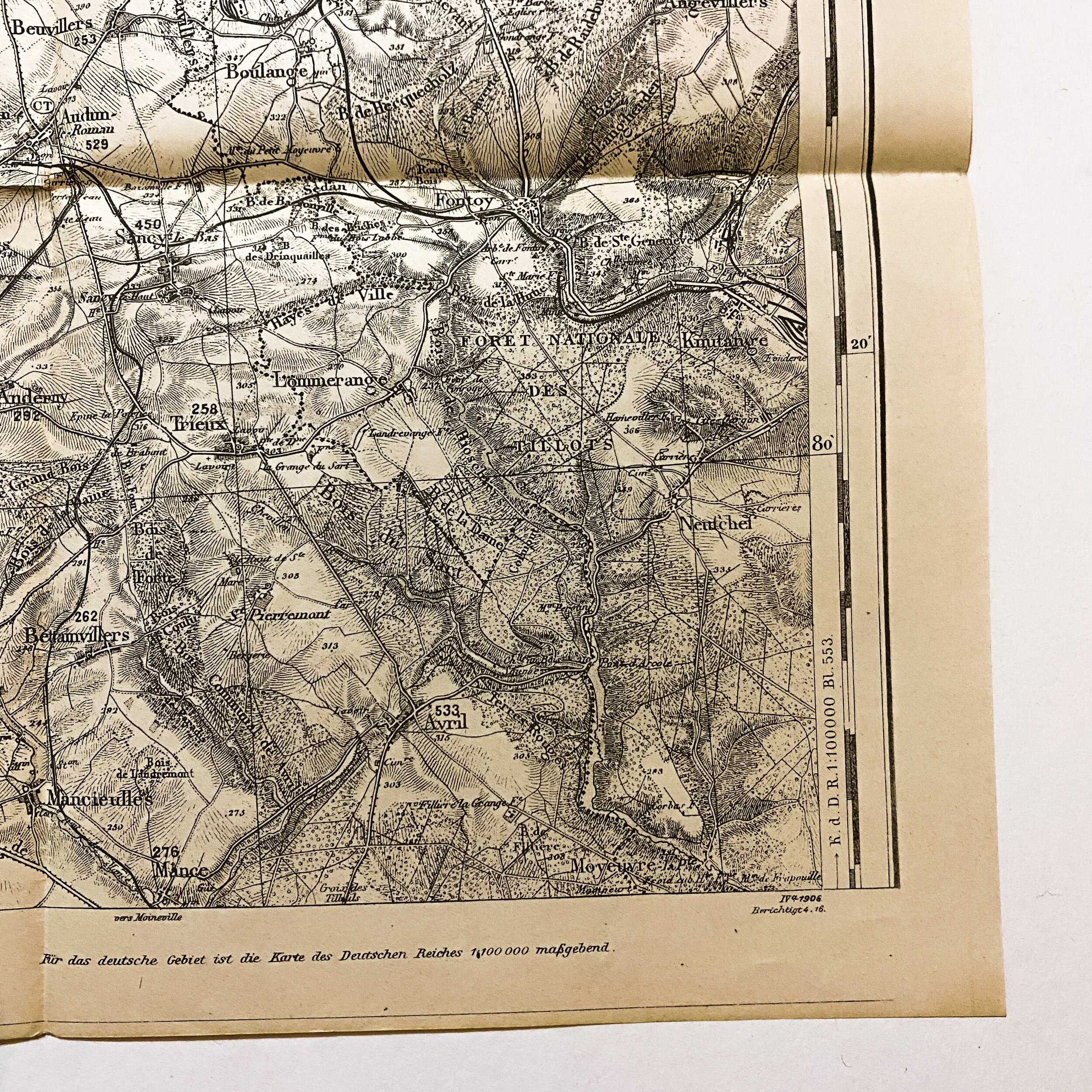

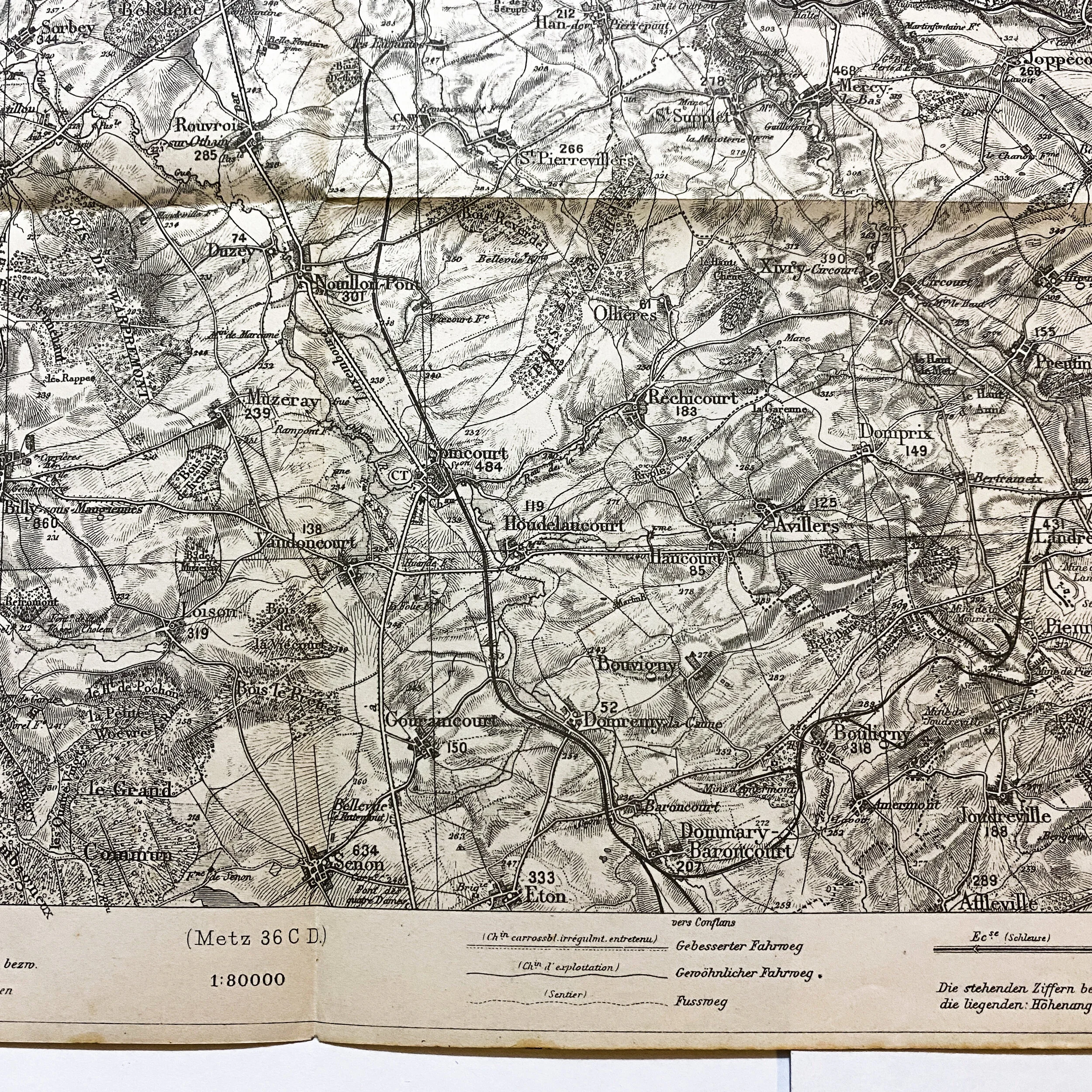



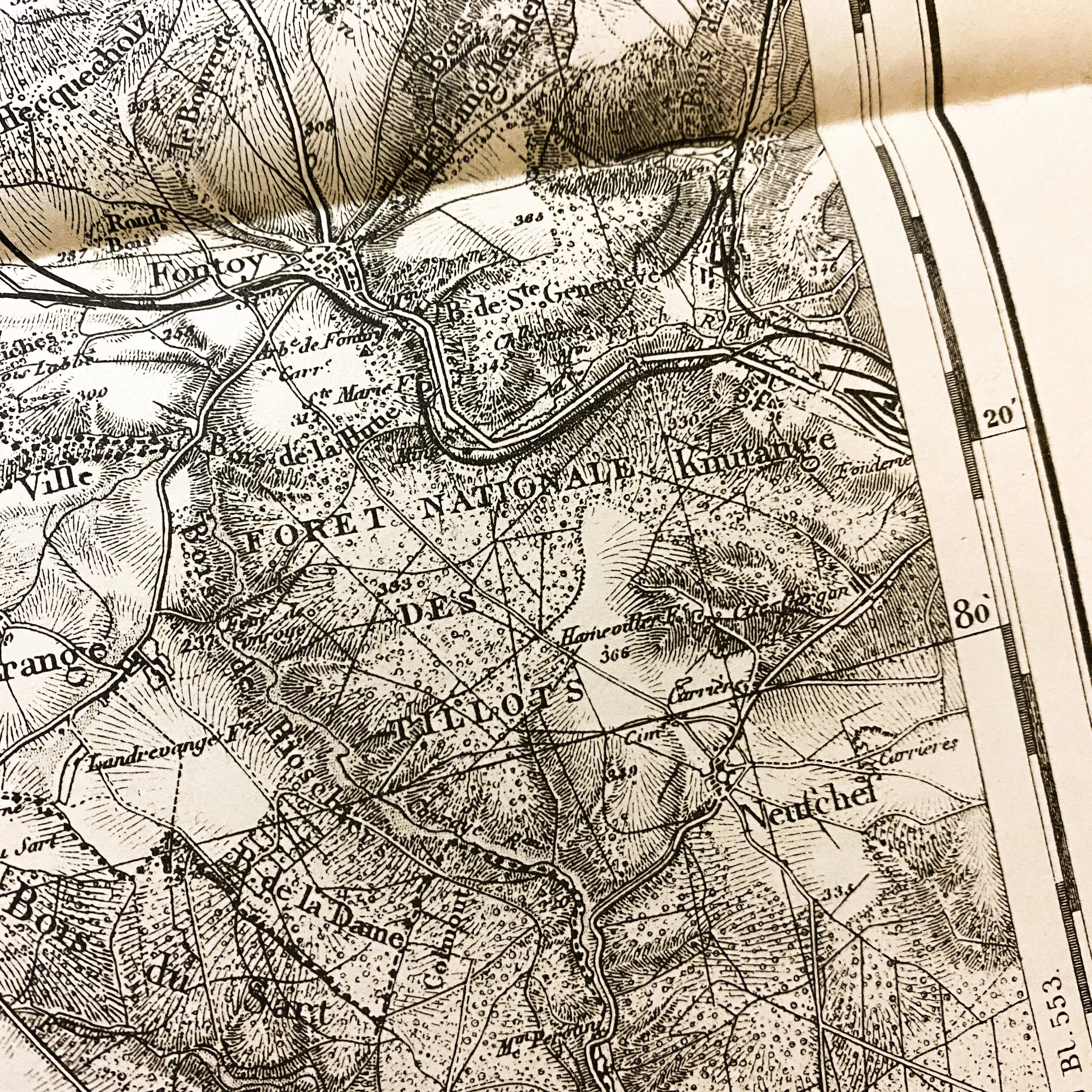


Captured German Combat Map of 'Metz 36AB' France Sector
Size: 25 x 12.25 inches
This original WWI German combat map of the ‘Metz’ France sector. This map is one of 45 taken off of a German major on the battlefield of ‘Rupt en Weurve’ in the St. Mihiel Sector on September 13th, 1917 by Lieut. Harry G. Sheldon of the A.E.F. forces. These maps are broken into sets of 4 being label A,B,C and D of each given sector and district. Putting these section together forms a large map. They are all common scale and can be placed side by side to fit. This map is labeled ‘Metz 86AB’ and is 1 of 4 maps for this given sector.
This map would have utilized and used in the Metz sector also located near the towns of St. Mihiel and Verdun. This map features notable locations such as the Forest Nationale Des Tillots, Beuvillers, and Romagne.
Battle of St. Mihiel:
The Battle of Saint-Mihiel was a major World War I battle fought from 12–15 September 1918, involving the American Expeditionary Forces (AEF) and 110,000 French troops under the command of General John J. Pershing of the United States against German positions. The U.S. Army Air Service played a significant role in this action.
This battle marked the first use of the terms "D-Day" and "H-Hour" by the Americans.
The attack at the Saint-Mihiel salient was part of a plan by Pershing in which he hoped that the Americans would break through the German lines and capture the fortified city of Metz. It was the first and only offensive launched mainly by the United States Army in World War I, and the attack caught the Germans in the process of retreating. This meant that their artillery was out of place and the American attack, coming up against disorganized German forces, proved more successful than expected. The Saint-Mihiel attack established the stature of the U.S. Army in the eyes of the French and British forces, and again demonstrated the critical role of artillery during World War I and the difficulty of supplying such massive armies while they were on the move. The U.S. attack faltered as artillery and food supplies were left behind on the muddy roads. The attack on Metz was not realized, as the Supreme Allied Commander Ferdinand Foch ordered the American troops to march towards Sedan and Mézières, which would lead to the Meuse-Argonne Offensive.
General John Pershing thought that a successful Allied attack in the region of St. Mihiel, Metz, and Verdun would have a significant effect on the German army. General Pershing was also aware that the area's terrain setting first dictated that the restricted rail and road communications into Verdun (restrictions that had been imposed by the German attack during the Battle of Flirey) be cleared, and that a continuation of the attack to capture the Germany railroad center at Metz would be devastating to the Germans. For this, he placed his confidence in a young First Infantry Division Major, George Marshall, to move troops and supplies effectively throughout the battle. After these goals were accomplished, the Americans could launch offensives into Germany proper. The American First Army had been activated in August and taken over the sector of the Allied line. Pershing had to persuade Marshall Foch (the supreme Allied military commander) to permit an American attack on the salient.